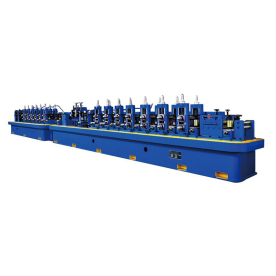[Stainless steel pipe mill production line]Understanding the Processes and Benefits of a Stainless Steel Pipe Mill Production Line for Modern Industrial Applications
News 2024-8-30

Understanding the Processes and Benefits of a Stainless Steel Pipe Mill Production Line for Modern Industrial Applications
Stainless steel has established itself as one of the most suitable materials for various industrial and structural applications, thanks to its impressive resistance to corrosion, durability, and strength. A stainless steel pipe mill production line is a crucial component in the manufacturing sector, designed to process raw stainless steel into high-quality pipes used across diverse industries. In this article, we will explore the processes involved in a stainless steel pipe mill production line, the benefits of using stainless steel pipes, and different applications where these pipes are pivotal.
The Production Process of Stainless Steel Pipes
A stainless steel pipe mill production line involves several key stages, each critical to ensuring the quality and performance of the final product. Typically, the process can be divided into the following segments:
1. **Raw Material Preparation**: The production begins with high-grade stainless steel in sheet or coil form. These materials are often produced using methods like electric arc furnaces (EAF) or induction melting furnaces, which allow for the recycling of scrap metal.
2. **Forming**: Once the raw material is prepared, it is subjected to processes that convert it into the desired pipe shape. This typically involves roll forming, a method that passes the raw material through a series of rollers that progressively shape it into a cylindrical form. For certain applications, the spiral welding process is used, which allows for the creation of larger diameter pipes.
3. **Welding**: After the stainless steel is formed into shape, the edges of the material are joined using welding techniques, which may include TIG (Tungsten Inert Gas) or MIG (Metal Inert Gas) welding. The type of welding method chosen can depend on the specific pipe application and required quality standards.
4. **Heat Treatment**: Post-welding, the pipes often undergo a heat treatment process to relieve stresses and improve their mechanical properties. This process may include annealing, which enhances corrosion resistance and ductility.
5. **Cold Working**: In some cases, pipes may be subjected to cold working processes that involve further shaping them while they are at room temperature. This may also improve the strength and hardness of the pipe.
6. **Finishing**: The final stage involves finishing processes, including polishing and passivation, which not only enhance the aesthetic appearance of the stainless steel pipes but also improve their performance by providing an additional layer of protection against corrosion.
7. **Quality Control**: Throughout the entire production process, rigorous quality control measures ensure that the pipes meet strict industry and customer standards. This includes non-destructive testing methods such as ultrasonic, radiographic, and eddy current tests to examine the integrity of the welds and material.
Benefits of Stainless Steel Pipes
The use of stainless steel pipes in various applications comes with a plethora of benefits that set them apart from other materials:
- **Corrosion Resistance**: One of the hallmark features of stainless steel is its remarkable resistance to rust and corrosion, particularly in environments that contain moisture or chemicals. This makes stainless steel pipes ideal for use in chemical processing and water treatment industries.

Understanding the Processes and Benefits of a Stainless Steel Pipe Mill Production Line for Modern Industrial Applications
- **Aesthetic Appeal**: Stainless steel offers an attractive and modern finish. As such, it is often used in architectural applications where appearance is a crucial factor.
- **Low Maintenance**: Unlike conventional pipes that may require periodic maintenance or replacement, stainless steel pipes typically have a longer lifespan and require less upkeep.

Understanding the Processes and Benefits of a Stainless Steel Pipe Mill Production Line for Modern Industrial Applications
Applications
Stainless steel pipes are utilized in a variety of industries, including:
- **Oil and Gas**: Used for transporting liquids and gases safely and efficiently. - **Chemical Processing**: Essential for carrying corrosive substances. - **Construction**: Employed in the framework and infrastructure of buildings. - **Food and Beverage**: Utilized in sanitary applications where cleanliness is vital.
Conclusion
The stainless steel pipe mill production line is a sophisticated system that results in high-quality pipes suitable for a myriad of applications. With benefits such as resistance to corrosion, durability, and aesthetics, stainless steel pipes contribute significantly to various industries' productivity and safety. As technology continues to evolve, the processes and techniques used in these production lines are sure to become even more efficient, ensuring that stainless steel remains a vital material in modern engineering and manufacturing.
